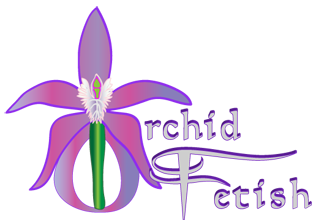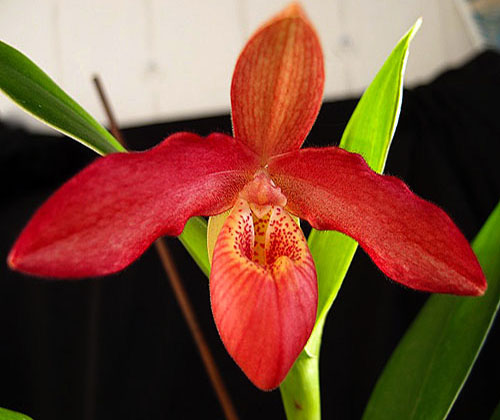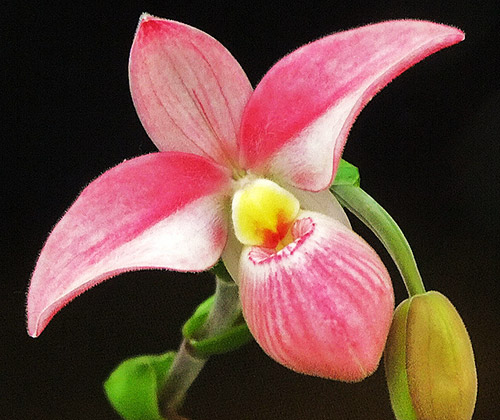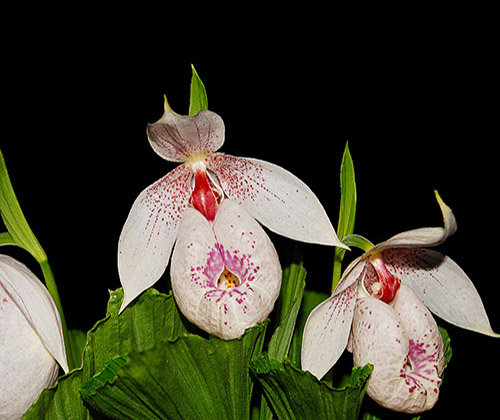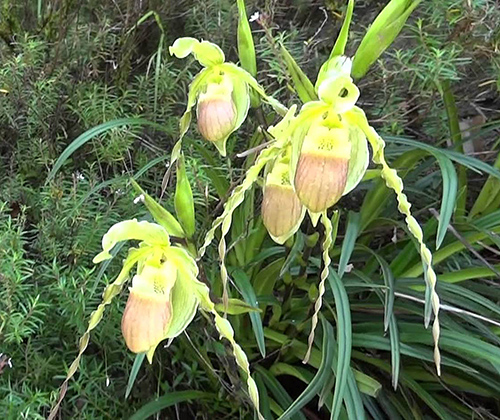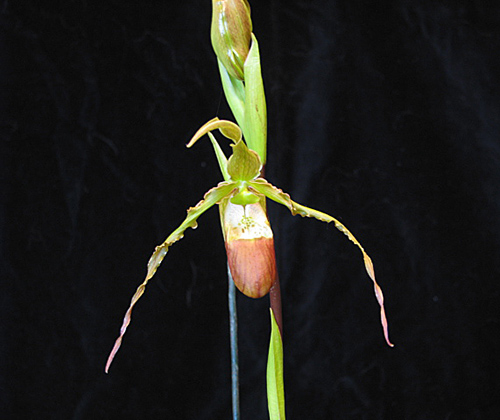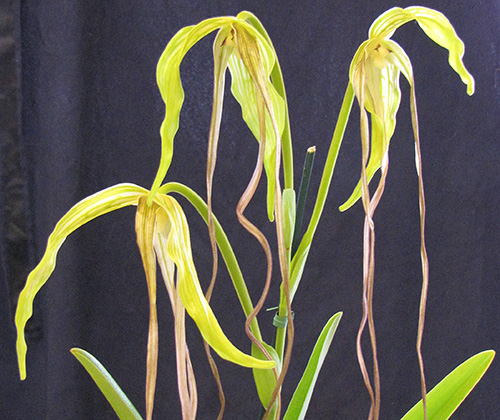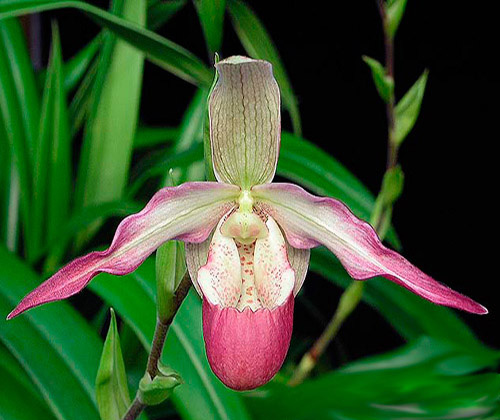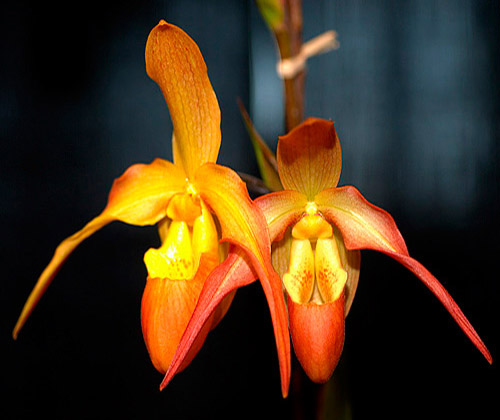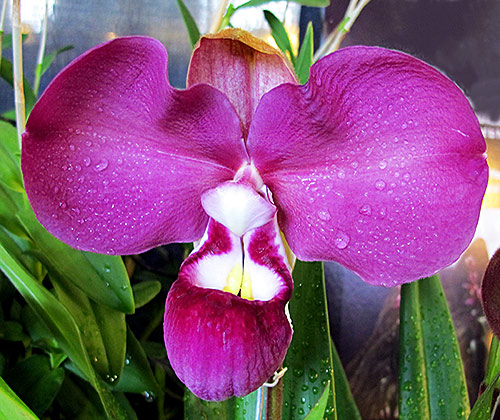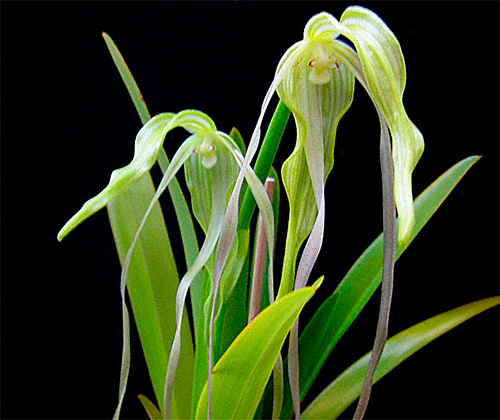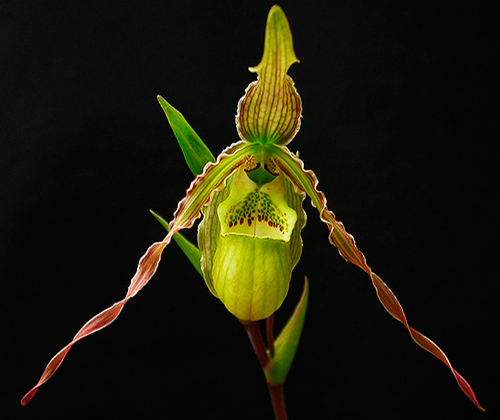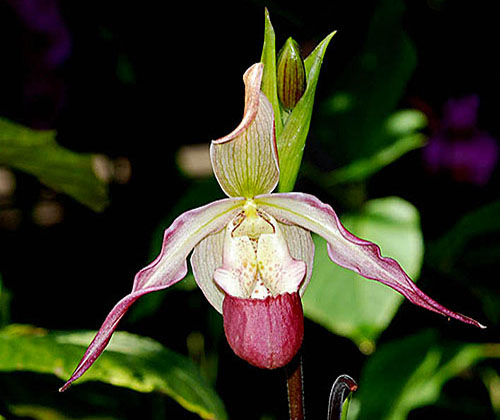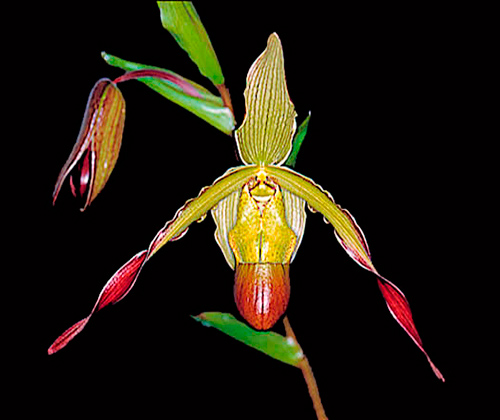Phragmipedium Orchid
New World Lady Slipper
Phragmipedium (Phrags) is a genus of orchids native to South America and resemble Paphiopedilums in flower form and plant habit. Phrags grow naturally in humid, boggy environments in fast draining media. They require medium to very high light and good air movement. Flowers can last 2-2½ weeks before dropping while still fresh. Plants in the caudatum alliance tend to open almost simultaneously while others bloom sequentially and can last in bloom for many months, some even up to a year. Parents of many of the modern hybrids such as Phrag Besseae grow along river banks on hillsides where temps are sometimes in the low to mid 50’s at night and the overall conditions are wet. In order to meet Phrag growing requirements in greenhouse or home culture, the following method will encourage fast-growing plants and early flowering.Phragmipediums are new world ladyslippers that grow from Mexico through the central and northern parts of South America. They can be found growing on rock outcroppings (Mexipedium xerophyticum), in forks of trees (caudatum), or volcanic clay (boisserianum and wallisii). Some plants such as longifolium, ecuadorense, pearcei, or klotzscheanum grow submerged underwater through periods of heavy rainfall. The flowering season is heaviest in the spring. However many species can bloom for 6-11 months at a time, often one flower consecutively after another. The flower colors vary from green to mahogany-pink and the brightly fluorescent orange of Phragmipedium besseae, which was recently discovered in 1981. Since then, the Phragmipedium has been used to create several hybrids of amazing colors and shapes. Without a doubt, this genus of orchid produces some of the most eye popping flowers in the market.
Light
Most Phrags are light lovers. They thrive in conditions similar to Cattleya but with slightly less light. Phrag besseae, schlimii and pearcei prefer lightly shaded conditions. They can tolerate brief periods of higher temperature but they are more comfortable with winter temperature in the 70’s and summer temperature in the lower 80’s. Night temperature in the lower 60’s is best. Good air movement is a must with fans running 24/7 to keep the foliage dry. Phrag hybrids are much more tolerant of ‘off’ conditions and will thrive in environments outside of those which the species require. We expect that the hybrids of newly discovered Phrag. kovochii will be easy to grow and bloom when matted to some of the P. besseae hybrids.
Temperature
Phrags generally require intermediate temperatures with days in the 70's or 80's (degrees Fahrenheit) and nights in the upper 50's to low 60's. Some Phrags like longifolium, sargentianum, pearcei, ecuadorense and hirtzii will tolerate slightly warmer temperatures. One problem that seems to occur during the summer is a soft, brown bacterial rot that appears at the base of the leaves. When you see this, carefully pull these infected leaves off and treat the plant with a bactericide such as Phyton-27 or Agri-Strep or streptomycin.
Water & Humidity
Because of their high water requirements Phrags can be grown in hydroponic containers or in saucers of water. Some growers have had had sucess with using semi hydroponic method using expanded clay pellets in plastic containers to provide a constant water source with excellent results. Water is applied directly into the hydroponic media allowing the water-fertilizer solution to drain through the holes at the base of the container. Fresh fertilizer/water is applied daily or every other day using very low concentrations of water/fertilizer. Discard water collected in the saucer and cup every week to keep the entire system fresh.
Fertilizer
Phrags are bog-type plants. Water daily if possible especially in summer. Phrags are very sensitive to water quality so RO, or collected rainwater is best to which a small amount of fertilizer (1/16th teaspoon/gallon) is added. MSU fertilizer along with a few drops of Superthrive can be used. Flush the plants once a week with clear water. We add earth-worm castings to the surface of the media at a rate of 1T per 4” pot and refresh every 3 months to provide additional trace elements.
Potting
A good potting mix is one that is fast draining. Our phrag mix is one containing 6 parts of medium fir bark to one part each of med charcoal, medium sponge roc, medium lava rock (red) and ½ part tree fern. Some growers have experimented using expanded clay pellets or medium grade Diatomite, or other inert ingredients with good success.Phrags resist a stale mix. Because they are watered daily the mix will begin to break down in less than 1 year. (If using an organic mix.) Therefore we recommend repotting adult plants every 12 months and seedlings and younger plants with fewer roots every 6 months. A leaf with a light brown soft rot should be removed immediately and dusted with a systemic fungicide. Home remedies such as cinnamon mixed with Elmer’s glue can be painted onto the infected area. When used at the onset of symptoms this has saved many plants over the years!
